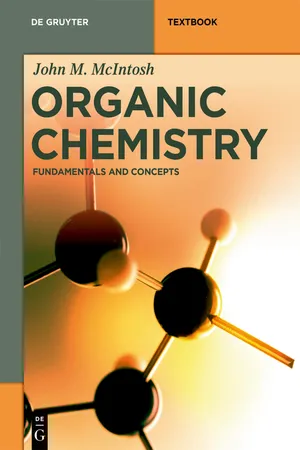eBook - PDF
Organic Chemistry
Frequently asked questions
Yes, you can cancel anytime from the Subscription tab in your account settings on the Perlego website. Your subscription will stay active until the end of your current billing period. Learn how to cancel your subscription.
No, books cannot be downloaded as external files, such as PDFs, for use outside of Perlego. However, you can download books within the Perlego app for offline reading on mobile or tablet. Learn more here.
Perlego offers two plans: Essential and Complete
- Essential is ideal for learners and professionals who enjoy exploring a wide range of subjects. Access the Essential Library with 800,000+ trusted titles and best-sellers across business, personal growth, and the humanities. Includes unlimited reading time and Standard Read Aloud voice.
- Complete: Perfect for advanced learners and researchers needing full, unrestricted access. Unlock 1.4M+ books across hundreds of subjects, including academic and specialized titles. The Complete Plan also includes advanced features like Premium Read Aloud and Research Assistant.
We are an online textbook subscription service, where you can get access to an entire online library for less than the price of a single book per month. With over 1 million books across 1000+ topics, we’ve got you covered! Learn more here.
Look out for the read-aloud symbol on your next book to see if you can listen to it. The read-aloud tool reads text aloud for you, highlighting the text as it is being read. You can pause it, speed it up and slow it down. Learn more here.
Yes! You can use the Perlego app on both iOS or Android devices to read anytime, anywhere — even offline. Perfect for commutes or when you’re on the go.
Please note we cannot support devices running on iOS 13 and Android 7 or earlier. Learn more about using the app.
Please note we cannot support devices running on iOS 13 and Android 7 or earlier. Learn more about using the app.
Yes, you can access Organic Chemistry by John M. McIntosh in PDF and/or ePUB format, as well as other popular books in Ciencias físicas & Química analítica. We have over one million books available in our catalogue for you to explore.
Information
Table of contents
- Preface
- Contents
- Part I: Fundamentals
- 1. Introduction
- 2. The Simplest Organic Molecules – The Hydrocarbons
- 3. The Shapes of Organic Molecules – Stereochemistry
- 4. Reactions – Basic Principles (or Where, Why, What, How Fast, and How Far)
- 5. Reactions of Alkanes, Alkenes, and Alkynes
- 6. More Stereochemistry and Another Reaction Type – Nucleophilic Substitution
- 7. Alcohols and Ethers, Amines, and Alkyl Halides. Introduction to Carbonyl Compounds (Aldehydes, Ketones)
- 8. More Carbonyl Chemistry – Acids and Their Derivatives
- 9. Aromatic Compounds – Benzene and Its Derivatives. Resonance as a Force Majeure
- 10. Organic Nitrogen Compounds – Amines and Amides
- 11. Introduction to Spectroscopy
- 12. Elimination Reactions
- Part II: The Naming of Organic Compounds
- 13. Introduction
- 14. Basic Principles
- 15. Alkenes, Alkynes, and Compounds With Rings
- 16. More Stereochemistry – The CIP System
- 17. Functional Groups
- 18. Aromatic Compounds
- Appendix: Answers to Problems From Part II
- Index
